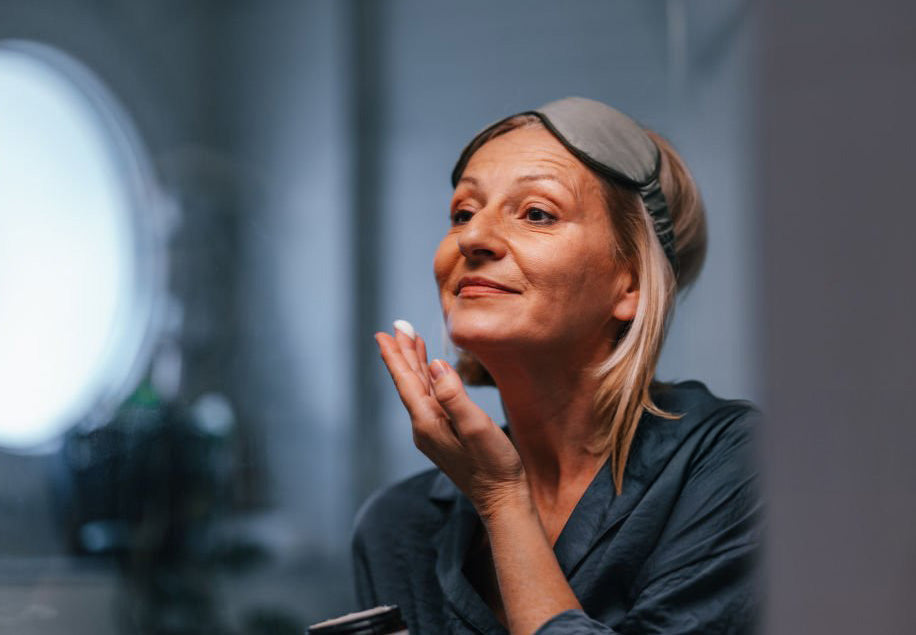As we age, the skin undergoes numerous changes due to a variety of factors—hormonal shifts being among the most significant. For many people, especially those experiencing menopause, maintaining youthful, healthy skin becomes a growing concern. Topical treatments like estrogen cream and retinol are commonly used to combat signs of aging, improve skin firmness, and address other skin concerns. But is it safe—or even beneficial—to use estrogen cream with retinol?
This article explores the relationship between these two powerful skincare agents and how they may complement or conflict with each other.
Understanding Estrogen Cream and Its Effects on Skin
Estrogen creams, including estriol cream and estradiol cream, are topical forms of hormone therapy designed to replenish declining estrogen levels in postmenopausal and perimenopausal women. These creams are often used to treat vaginal dryness, improve vaginal health, and restore vaginal tissues, but research has also shown they may have notable effects on facial skin.
Topical estrogen—particularly estriol, a milder form of estrogen—has been associated with:
-
Improved skin firmness
-
Increased collagen production
-
Reduction in fine lines and wrinkle depth
-
Enhanced wound healing
-
Restoration of skin thickness
Estrogen works by activating estrogen receptors in the skin, which support cell turnover, enhance skin moisture, and improve overall skin health. Because of its skin-rejuvenating properties, estriol face cream is a growing option in menopause skincare.
The Role of Retinol in Skincare
Retinol, a derivative of vitamin A, is a well-known ingredient in many skincare products aimed at fighting skin aging. It works by stimulating cell turnover, enhancing collagen production, and reducing fine lines, wrinkle depth, and hyperpigmentation. Retinol can also unclog pores, making it a common recommendation for acne-prone skin.
Despite its efficacy, retinol is also known for its potential to cause skin irritation, dryness, and sensitivity—especially when first introduced into a skincare routine. For individuals with aging skin or sensitive skin, this side effect can be particularly troublesome.
Can You Use Estrogen Cream and Retinol Together?
The short answer is yes, but with caution.
When used correctly, topical estrogen and retinol may complement each other in addressing signs of aging. Estrogen cream helps to restore the skin’s natural moisture barrier, improve skin elasticity, and support collagen production, while retinol encourages skin renewal and reduces the appearance of fine lines.
However, combining both can also increase the risk of skin irritation if not properly managed. Here are a few considerations:
-
Start Low and Slow: Introduce retinol gradually into your routine. If you’re already using estrogen cream, give your skin time to adjust before adding retinol.
-
Alternate Days: Some dermatologists recommend using estrogen cream and retinol on alternating nights to minimize sensitivity.
-
Layering Order: If you use both products in the same routine, apply estrogen cream first to replenish moisture and enhance skin barrier function, followed by retinol. Alternatively, consult a healthcare professional or board-certified dermatologist for personalized guidance.
-
Hydration is Key: Use a rich moisturizer or hyaluronic acid serum to buffer retinol's drying effects.
-
Monitor for Irritation: Watch for excessive redness, flaking, or burning sensations. If these occur, reduce usage frequency or consult your healthcare provider.
What About Vaginal Estrogen Creams?
Many women use vaginal estrogen creams such as estriol or vaginal estradiol to address menopausal symptoms like vaginal dryness and discomfort. These are typically applied intravaginally and have minimal systemic absorption, especially when formulated in low doses. While their primary purpose isn’t skincare, some formulations are being explored for off-label use on facial skin under medical supervision.
However, do not use prescription products like vaginal creams on the face unless explicitly directed by your provider.
Benefits of Combining Hormone Therapy and Retinol
When used strategically and safely, combining hormone replacement therapy (topical or systemic) with retinoids may offer:
-
Enhanced skin thickness and firmness
-
Improved skin hydration
-
Faster cell turnover and skin renewal
-
Reduction in fine lines and improvement in skin texture
These benefits align with the skin concerns faced by women undergoing menopausal hormone therapy, especially those experiencing brain fog, hot flashes, and skin aging due to declining estrogen levels.
Potential Risks and When to Seek Guidance
Because both estrogen and retinol are biologically active agents, it’s essential to use them under the supervision of a healthcare professional. Hormone-based products can have systemic effects, and improper use may affect your hormone level or lead to unwanted side effects.
Additionally, women with a history of hormone-sensitive cancers or blood clots should consult their physician before beginning any estrogen therapies, even those applied topically.
Final Thoughts: An Informed Approach to Skincare
Combining estrogen cream with retinol can be a powerful duo in the fight against aging skin, offering benefits from both hormone replenishment and increased cell turnover. Whether you're addressing menopausal symptoms, looking to maintain healthy skin, or seeking to reduce fine lines, the key is a balanced and informed approach.
Before incorporating these treatments into your skincare routine, consult with a healthcare provider to ensure they align with your overall consumer health and hormone profile. With expert guidance, this combination can help enhance skin firmness, reduce visible signs of aging, and support radiant, more youthful-looking skin.
For informational purposes only. Not intended to diagnose, treat, cure, or prevent any disease. Always seek advice from a licensed professional.



